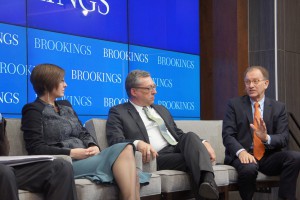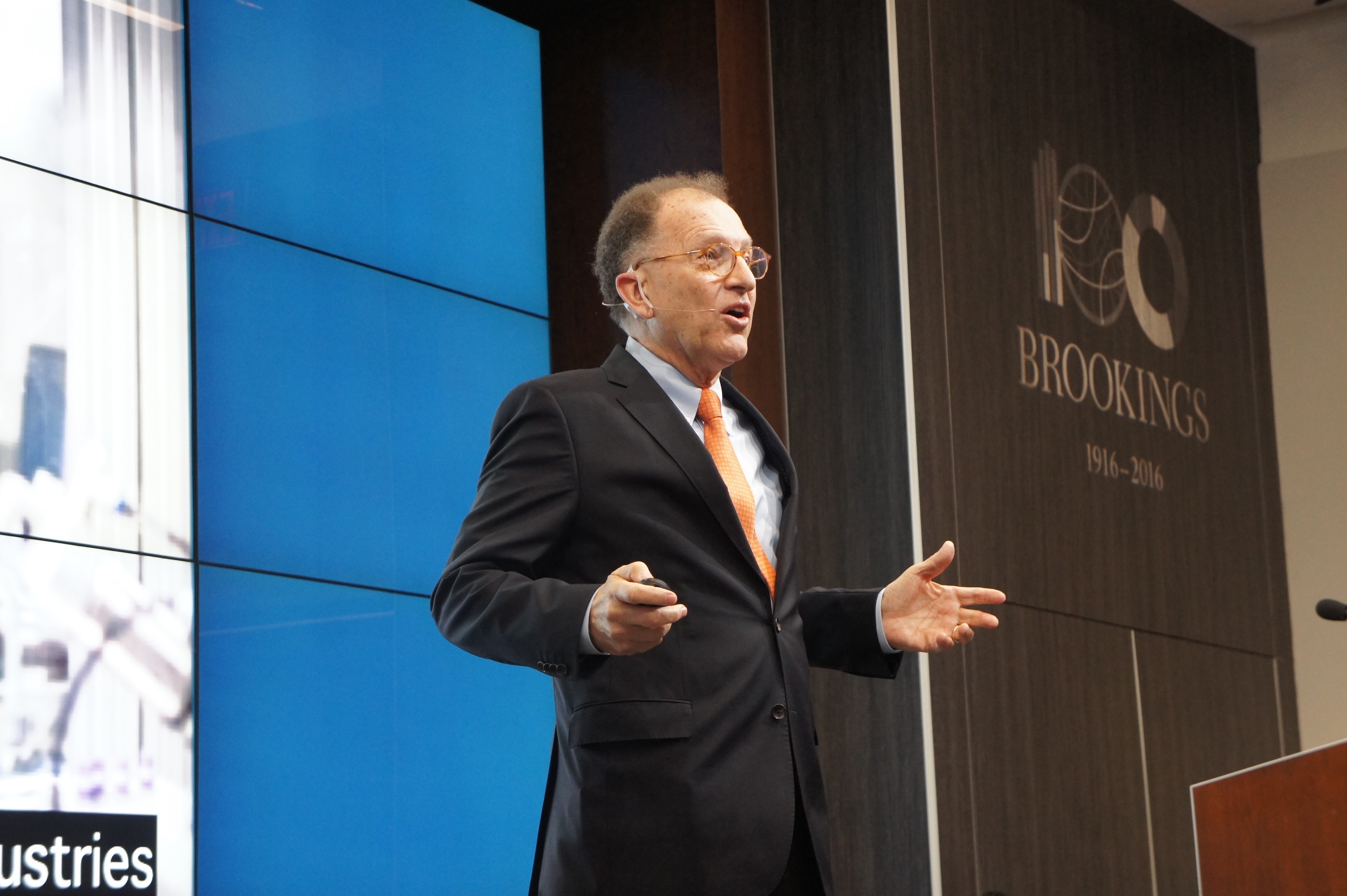WASHINGTON – Albany, in the forefront of nanotechnology research, is one of the fastest-growing cities for tech jobs, according to a new book exploring hot spots of innovation across the globe.
“You have GlobalFoundries, which has thousands of employees working in one of the most modern plants in the world,” says Antoine van Agtmael, the Dutch-born investor who wrote “The Smartest Places on Earth: Why Rustbelts Are the Emerging Hotspots of Global Innovation” with Dutch journalist Fred Bakker.
Their book, discussed at a Brookings Institution panel discussion last week, lists Albany as a leading innovation hub — part of an emerging “brainbelt” in the United States.
SUNY Polytechnic Institute, with support from state government, has been behind much of the growth of the local semiconductor and nanotechnology sectors, attracting major corporate research centers to its Albany campus that have fueled private sector job growth throughout the Capital Region.
“New York is proud to be home to some of the most sophisticated computer chip research on the planet, and with thousands of scientists and engineers, from Albany to Buffalo, we are growing the industry like never before,” Gov. Andrew Cuomo said last year. “These strategic investments in nanotechnology, as well as replicating the success in Albany across upstate, have attracted global leaders like Nikon that are bringing private funding and job opportunities to New York.”
In February, SUNY Polytechnic Institute and GlobalFoundries, a California computer chip manufacturing firm that employs 3,000 at a factory in nearby Saratoga County, announced a new $500 million program to generate over 100 jobs developing next generation chip manufacturing technologies.
Last year, German based engineering and construction company M+W Group said it would expand its U.S. headquarters at SUNY Poly’s campus in Albany. The company is also partnering with SUNY Poly and Gehrlicher, one of its subsidiaries, on a $105 million solar and energy storage systems construction initiative across the state that’s expected to create up to 400 jobs.
“The Americans are not in decline, they are in fact regaining in competitiveness,” Agtmael said. Instead of competing with countries like China in the cheap labor market, he argues, smart business innovations should give the U.S. a competitive edge.
“New productivity methods are reinventing old industries,” says Agtmael, a former World Bank executive credited with coining the term “emerging markets.”
Brainbelts, as the author calls them, are communities that have transformed from old industries to innovative incubators.
In the industrial Midwest, Akron, Ohio has evolved from a rubber capital to a city focusing on polymer research and development.
And dozens of other U.S. cities and some European communities are in the process of transforming from the “rustbelt” — industrial centers in decline — to a “brainbelt” of design and innovation.

Brookings Institution panelists Rebecca Bagley and Bob Geolas discuss the emerging innovation trend with Antoine van Agtmael. (Xiumei Dong/MNS)
While it sounds good, “the hardest thing is how do we measure that, because it is so organic and so dynamic,” Research Triangle Park CEO Bob Geolas said at the Brookings panel, held Wednesday in Washington, D.C.
It is difficult to measure the success, Geolas said, so it’s important to look at the broader trend.
Agtmael said the U.S. is no longer hemorrhaging jobs. While the transition in the economy is intimidating, it is also creating more jobs in the high-tech sector. Government and private sector companies must cooperate, he said, to carry out new policies and incentivize people and communities to participate in the transformation.


